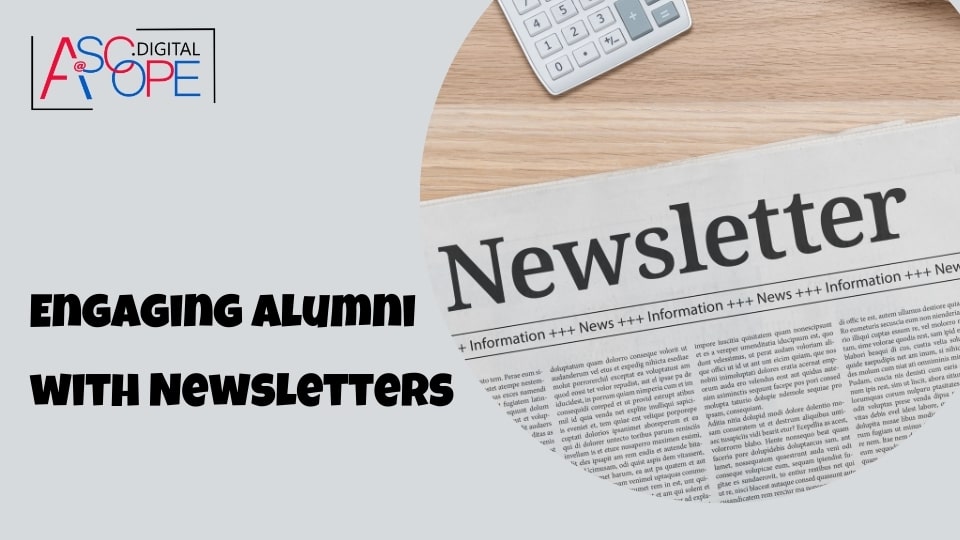In the realm of educational marketing, engaging alumni through newsletters is a powerful strategy that institutions can leverage to foster a strong sense of community, enhance brand loyalty, and drive support for various initiatives. Alumni are a valuable asset to any educational institution, serving as brand ambassadors, mentors, and potential donors. Effective alumni engagement can lead to increased donations, higher event attendance, and a stronger network of professionals who can support current students. This comprehensive guide delves into the best practices for engaging alumni with newsletters, covering everything from content creation to distribution strategies.
Understanding the Importance of Alumni Newsletters

Alumni newsletters serve as a bridge between educational institutions and their graduates. They keep alumni informed about the latest developments, upcoming events, and opportunities to get involved. Newsletters can also celebrate the achievements of alumni, creating a sense of pride and belonging. By maintaining regular communication, institutions can ensure that alumni feel connected and valued, which can lead to increased engagement and support.
Crafting Compelling Content
The success of an alumni newsletter largely depends on the quality of its content. Here are some key elements to consider when creating content for alumni newsletters:
Personalized Messages
Personalization is crucial in making alumni feel special and appreciated. Use segmentation to tailor messages based on the alumni’s graduation year, major, or interests. Personalized greetings and content that resonate with their experiences at the institution can significantly enhance engagement.
Institutional Updates
Keep alumni informed about the latest news and developments at the institution. This can include updates on new programs, faculty achievements, campus renovations, and strategic initiatives. Highlighting these updates can foster a sense of pride and connection to the alma mater.
Alumni Spotlights
Feature stories about successful alumni and their accomplishments. This not only celebrates their achievements but also serves as inspiration for other alumni and current students. Including interviews, profiles, and testimonials can make the newsletter more engaging and relatable.
Upcoming Events
Promote upcoming events such as reunions, webinars, workshops, and networking opportunities. Providing detailed information about these events, along with registration links, can encourage alumni to participate and stay connected.
Opportunities for Involvement
Inform alumni about various ways they can get involved, whether through mentoring programs, volunteering, or donating. Clearly outlining these opportunities and their impact can motivate alumni to contribute their time and resources.
Exclusive Content
Offer exclusive content that is only available to alumni. This can include access to special lectures, online courses, research publications, or behind-the-scenes campus tours. Providing unique value can enhance the sense of exclusivity and privilege associated with being an alumnus.
Designing an Engaging Newsletter

The design of the newsletter is just as important as the content. An aesthetically pleasing and easy-to-navigate layout can enhance the reading experience and encourage alumni to engage with the content. Here are some design tips to consider:
Visual Appeal
Use high-quality images and graphics to make the newsletter visually appealing. This can include photos of recent events, campus scenes, and alumni activities. Visual elements can break up text and make the newsletter more engaging.
Responsive Design
Ensure that the newsletter is mobile-friendly. Many alumni will likely access the newsletter on their smartphones or tablets, so it’s essential to use a responsive design that adjusts to different screen sizes.
Clear Structure
Organize the content into clear sections with headings and subheadings. This makes it easier for readers to scan the newsletter and find the information that interests them most. Using bullet points and short paragraphs can also enhance readability.
Call-to-Actions (CTAs)
Include clear and compelling CTAs throughout the newsletter. Whether it’s registering for an event, joining a volunteer program, or making a donation, CTAs should be prominent and easy to follow. Using buttons and links can make it easier for alumni to take action.
Effective Distribution Strategies
Even the best content and design won’t achieve the desired results without an effective distribution strategy. Here are some tips for ensuring that your alumni newsletters reach their intended audience:
Email List Management
Maintain a clean and up-to-date email list. Regularly update contact information and remove inactive email addresses to improve deliverability. Segmenting the email list based on different criteria can also help in sending more targeted and relevant content.
Consistent Schedule
Establish a consistent schedule for sending out newsletters. Whether it’s monthly, quarterly, or bi-annually, consistency helps in setting expectations and building anticipation among alumni.
A/B Testing
Use A/B testing to determine what works best for your audience. Test different subject lines, content formats, and sending times to identify the most effective strategies. Analyzing the results can help in continuously improving the newsletter.
Monitoring and Analytics
Track the performance of your newsletters using analytics tools. Monitor key metrics such as open rates, click-through rates, and conversion rates. Understanding what resonates with your audience can help in refining the content and design of future newsletters.
Engaging Alumni Beyond Newsletters
While newsletters are a powerful tool for alumni engagement, they should be part of a broader strategy. Here are some additional ways to engage alumni:
Social Media: Leverage social media platforms to connect with alumni. Create dedicated alumni groups on platforms like LinkedIn and Facebook where alumni can network, share updates, and engage with the institution.
Alumni Events: Organize events specifically for alumni, such as reunions, homecomings, and networking events. These events provide opportunities for alumni to reconnect with each other and the institution.
Mentorship Programs: Establish mentorship programs where alumni can mentor current students. This not only provides valuable guidance to students but also strengthens the bond between alumni and the institution.
Volunteer Opportunities: Offer various volunteer opportunities for alumni to give back to the community and the institution. This can include speaking engagements, advisory roles, and participation in fundraising campaigns.
Conclusion
Engaging alumni with newsletters is a strategic approach that can yield significant benefits for educational institutions. By crafting compelling content, designing visually appealing newsletters, and implementing effective distribution strategies, institutions can foster a strong and engaged alumni community. Beyond newsletters, leveraging social media, organizing events, and offering volunteer opportunities can further enhance alumni engagement. Ultimately, a well-executed alumni engagement strategy can lead to increased support, stronger brand loyalty, and a more vibrant institutional community.
Thus, improving traffic and sales for your website. Read more on the other reasons why your website isn’t getting traffic. Engaging alumni with newsletters is just one piece of the puzzle in creating a thriving and supportive alumni network. By continuously refining your strategies and listening to the needs and preferences of your alumni, you can build lasting relationships that benefit both the institution and its graduates.


